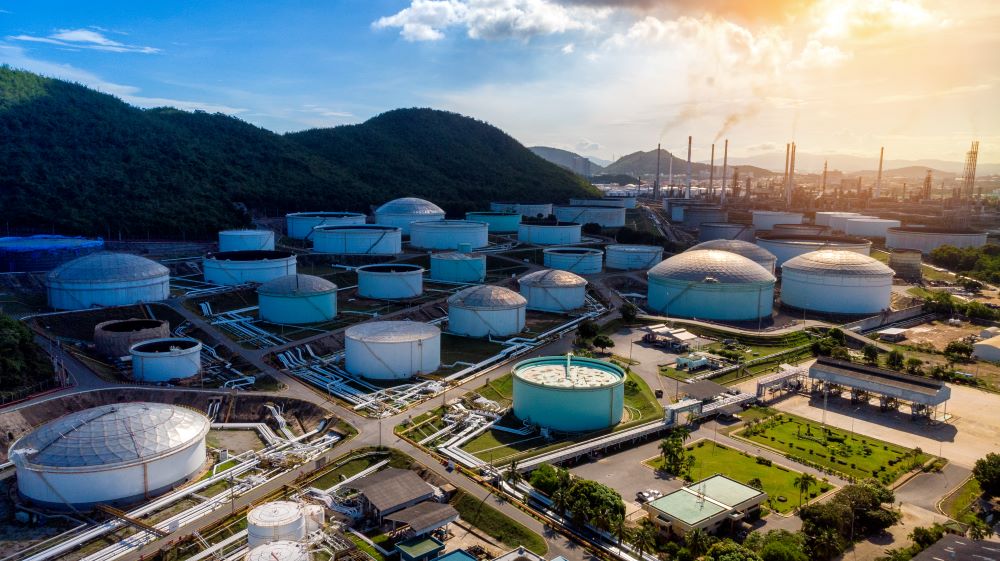So you’ve decided it’s time to replace that old floating roof seal in your storage tank. Excellent decision – an effective seal is critical for controlling emissions, preventing fires, and maximizing product retention. But selecting a new floating roof seal is not as simple as picking any old seal off the shelf. There are several factors to consider to choose a seal that will meet the needs of your specific tank and application. Do you go for a mechanical shoe seal, a resilient seated seal, or a foam-filled seal? What material is right for your product – aluminum, stainless steel or synthetic? What size and how many seals do you need? This article will walk you through the key considerations for choosing a floating roof seal so you end up with a solution that seals the deal.
Understanding Floating Roof Seals and Their Importance
Floating roof seals are essential components in storage tanks that help minimize product loss and environmental impact. They create an impermeable barrier between the liquid contents of the tank and the outside air, preventing evaporation and reducing emissions.
There are two main types of floating roof seals: mechanical shoe seals and resilient/flexible seals. Mechanical shoe seals are metal plates that slide against the tank wall, while resilient seals are made of synthetic rubber sheets that conform to the shape of the tank. Resilient seals typically offer better performance since they create a tighter seal.
When choosing a seal, consider:
- Tank dimensions and roof type: Seals must properly fit your tank and work with either an internal or external floating roof.
- Product stored: Seals need to be chemically compatible with the specific liquid contents. Materials that work for one product may fail with another.
- Environmental regulations: More stringent rules often require higher-performance seal options to minimize emissions.
- Cost: Resilient seals tend to cost more but may pay off through lower product loss and compliance with regulations.
Other factors like ease of installation, durability, and maintenance requirements should also influence your choice. The optimal seal for your application will balance performance, cost, and operational efficiency.
With the variety of floating roof seals available, you can find an affordable and effective solution for your storage tanks. Taking the time to understand the options and choose wisely will benefit both your business and the environment.
Mechanical Shoe Seal vs Low profile secondary seal
When choosing a seal for your external and internal floating roof tank, you have two main options: mechanical shoe seals or low profile secondary seals. Each has its pros and cons, so consider your needs and priorities to determine the best solution.
Mechanical shoe seals are economical, low maintenance, and easy to install, but they can’t achieve a perfect vapor-tight seal and may require frequent adjustment.
Low profile secondary seals
Low profile secondary seals, on the other hand, provide an extremely tight seal for maximum emission control and product loss prevention. However, they tend to be more expensive, require precision installation, and need routine inspections and maintenance to function properly.
Some other factors to weigh when selecting a seal include:
- Compatibility – Make sure the seal material is chemically compatible with your stored product. Materials like ethylene propylene diene monomer (EPDM) or viton work for a range of chemicals.
- Application – Consider how the seal will be used. Perimeter seals, drain seals, and column seals have different requirements.
- Regulations – Choose a seal that complies with environmental regulations for volatile organic compound (VOC) emissions in your area. Secondary seals typically offer the best control.
- Installation – Think about how difficult the seal will be to install and remove for inspections and repairs. Mechanical shoe seals are often easiest to work with.
- Weather conditions – Make sure any seal option can withstand temperature extremes, UV exposure, and precipitation at your location.
- Cost – Compare initial capital costs as well as long-term operating and maintenance costs between different seal options.
With some thought about your priorities and operating conditions, you can choose a floating roof seal solution that offers the perfect balance of tightness, ease of use, and value. The right seal will help ensure safe, compliant, and cost-effective storage of your product.
Factors to Consider When Choosing a Floating Roof Seal
When choosing a floating roof seal, several factors should influence your decision.
Cost
Seal options vary widely in cost, from a few thousand to over a hundred thousand dollars, depending on the size and type of tank. Consider both initial cost as well as long term value and durability. More expensive seals typically last much longer, up to 20-30 years, so may save money in the long run.
Compatibility
Make sure any seal you choose is compatible with the specific floating roof tank you need to seal, whether internal or external, steel or concrete. Seals are designed for specific roof and tank types. Choosing an incompatible seal can lead to premature failure or damage.
Weather resistance
Seals must withstand exposure to elements like rain, snow, wind and temperature extremes. More durable seals use weather-resistant materials like EPDM rubber, silicone, or Teflon. Exposure to UV radiation from the sun can degrade some seal materials over time as well. Choose a seal rated for outdoor use and your local climate conditions.
Installation requirements
Consider the level of difficulty and any equipment needed to properly install the seal. Seals that require welding or use of adhesives may need specialized skills and tools. Easier to install options like compression seals or mechanically fastened seals can often be installed by general contractors or tank maintenance personnel.
Regulatory compliance
Make sure any seal option you consider meets standards for volatile organic compound (VOC) emissions, hazardous air pollutants (HAPs) and any other relevant environmental regulations. Many areas have restrictions on use of solvent-based sealants and adhesives. Choose water-based or low-VOC options when possible.
By weighing these key factors, you can choose a high-quality, cost-effective floating roof seal that meets both your needs and environmental responsibilities. The ideal seal will provide an airtight, watertight barrier for your tank with maximum durability and minimal maintenance required.
Conclusion
So there you have it. As you’ve seen, there are a number of factors to weigh when deciding on the best floating roof seal for your needs. The material, compatibility, environment and cost are all important to consider to ensure maximum protection and performance. While it can seem overwhelming with so many options, by focusing on what really matters for your specific operation and conditions, you’ll find a solution that checks all the boxes. Keep in mind that the seal you choose will directly impact safety, compliance and the bottom line. But with the right choice, you’ll have peace of mind knowing your floating roof and the environment are well protected. The perfect seal is out there, you just have to go find it!




